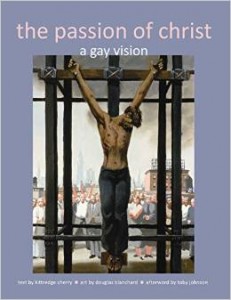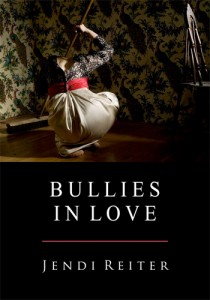Inclusive Church is a UK-based resource for making the Church of England more welcoming and sensitive to diversity around sexuality, race, class, disability, and mental health. The latter topic caught my attention during my ongoing search for materials for a trauma survivors’ Christian study group. What’s great about Inclusive Church is that they see the disabled and mentally troubled not merely as categories of consumers to be reached with an existing product, nor as objects of Christian charity, but as co-creators of theology from the standpoint of their lived experience. That’s been the goal of my “Survivors in Church” series on this blog as well. It disappoints me that most Christian books recommend using faith to suppress the socially uncomfortable symptoms of trauma, such as anger and rumination on the past, rather than heeding their radical challenge to faith.
This article from the Inclusive Church’s mental health resources page, “The Secret Holders and Bearers”, is by two community mental health chaplains who are willing to take up that challenge. In the portions quoted below, they consider how some standard prayers in the Sunday Eucharist service may reinforce abuse survivors’ distorted sense of themselves as broken and powerless. We need much, much more work like this.
…Are we prepared to be changed, transformed, outraged, and can the secret-holders enable our secrets to be borne more gently, even if they need to remain hidden for a while? Can we bear to hear when the practices and the theologies heard in some churches have not contributed to the empowerment of lives and voices but to their continuing silence? Even where genuine expressions of compassion and pastoral care have embedded the idea of ‘victim’ rather than the radical Gospel idea of partner and co- theological agents?…
…Let’s hear their words and attend afresh to our own and let’s attend to our liturgical language, see again the symbolism and architecture of our services and hear the clamour and the whispers, the invitations and the barriers that inhabit the theology in our liturgy and hymns. I am not saying that the brief account of these liturgical examples are wholly problematic but they are an example of a presently largely cataphatic liturgy with very little liturgy of lamentation and an apophatic perspective that speaks so much of human experience and especially the lived reality of those with long term and abiding mental health issues:
Just some examples from the present Common Worship Order 1 Service for Holy Communion:
Confession Prayer: We have wounded your love and marred your image in us (so many secret holders bear the woundedness that is wholly the responsibility of others and blame themselves throughout their lives and have been forced to blame themselves, lives overwhelmed by guilt. We tentatively suggest that such a statement echoes the feelings they already have about themselves, ‘knowing’ they are wholly unworthy of any kind of love, let alone the love of God).
… Lead us out from darkness to walk as children of light (on the face of it, who could argue with such a sentiment? However it represents a larger problem with the ‘darkness’ imaginary that suffuses Christian liturgy and theology. So many of us, in so many different ways, have found the metaphor of darkness wholly positive and therapeutic and the prospect of light almost unbearable at times. We need to look again at these intimately related metaphors.)
Prayer before Distribution: We are not worthy so much as to gather up the crumbs… (We know this is an optional prayer but nevertheless, and because it has been taken wholly out of context from a biblical story which effectively says the opposite, a sense of unworthiness just before we break bread together is, for all of us, and especially for those who live every day with an overwhelming and unbearable sense of unworthiness, wholly unfortunate directly before the gathering at the feast. We are worthy, all of us; we do not have sinful bodies but beautiful bodies and minds. Neither of us, personally, has been able to say these words for a long time because of our own inner battle with a sense of unworthiness imposed upon us by others).


